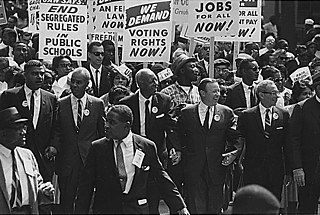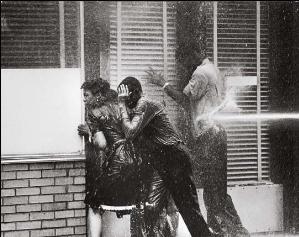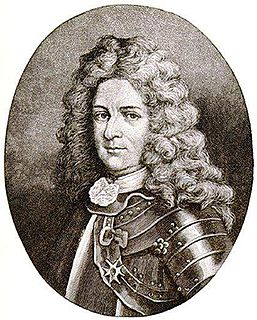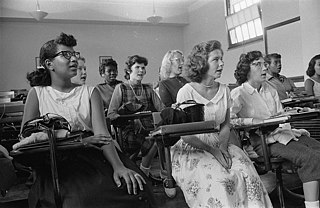
The civil rights movement in the United States was a decades-long struggle by African Americans to end legalized racial discrimination, disenfranchisement and racial segregation in the United States. The movement has its origins in the Reconstruction era during the late 19th century, although the movement achieved its largest legislative gains in the mid-1960s after years of direct actions and grassroots protests. The social movement's major nonviolent resistance campaigns eventually secured new protections in federal law for the human rights of all Americans.

The Montgomery bus boycott was a political and social protest campaign against the policy of racial segregation on the public transit system of Montgomery, Alabama. It was a seminal event in the civil rights movement. The campaign lasted from December 5, 1955 — the Monday after Rosa Parks, an African-American woman, was arrested for refusing to surrender her seat to a white person — to December 20, 1956, when the federal ruling Browder v. Gayle took effect, and led to a United States Supreme Court decision that declared the Alabama and Montgomery laws that segregated buses were unconstitutional.

The Congress of Racial Equality (CORE) is an African-American civil rights organization in the United States that played a pivotal role for African Americans in the Civil Rights Movement. Founded in 1942, its stated mission is "to bring about equality for all people regardless of race, creed, sex, age, disability, sexual orientation, religion or ethnic background."

Desegregation busing in the United States is the practice of assigning and transporting students to schools within or outside their local school districts in an effort to reduce the racial segregation in schools. While the 1954 U.S. Supreme Court landmark decision in Brown v. Board of Education declared racial segregation in public schools unconstitutional, many American schools continued to remain largely segregated due to housing inequality. In an effort to address the ongoing de facto segregation in schools, the 1971 Supreme Court decision, Swann v. Charlotte-Mecklenburg Board of Education, ruled that the federal courts could use busing as a desegregation tool to achieve racial balance.
Racial equality occurs when institutions give equal opportunities to people of all races. In other words, regardless of physical traits such as skin color, institutions and are to give individuals legal, moral, and political equality. In present day Western society, diversity and integration among races continues to become normative. Initially, attaining equality has been difficult for African, Asian, and Latino people, especially in schools. However, in the United States, racial equality, has become a law that regardless of what race an individual is, they will receive equal treatment, opportunity, education, employment, and politics.

The Greensboro sit-ins were a series of nonviolent protests in February to July 1960, primarily in the Woolworth store, now the International Civil Rights Center and Museum, in Greensboro, North Carolina, which led to the F. W. Woolworth Company department store chain removing its policy of racial segregation in the Southern United States. While not the first sit-in of the Civil Rights Movement, the Greensboro sit-ins were an instrumental action, and also the best-known sit-ins of the Civil Rights Movement. They are considered a catalyst to the subsequent sit-in movement, in which 70,000 people participated. This sit-in was a contributing factor in the formation of the Student Nonviolent Coordinating Committee (SNCC).

The Birmingham campaign, or Birmingham movement, was a movement organized in early 1963 by the Southern Christian Leadership Conference (SCLC) to bring attention to the integration efforts of African Americans in Birmingham, Alabama.
The Chicago Freedom Movement, also known as the Chicago open housing movement, was led by Martin Luther King Jr., James Bevel and Al Raby. It was supported by the Chicago based Coordinating Council of Community Organizations (CCCO) and the Southern Christian Leadership Conference (SCLC). The movement included a large rally, marches, and demands to the City of Chicago. These specific demands covered a wide range of areas besides open housing, and included quality education, transportation and job access, income and employment, health, wealth generation, crime and the criminal justice system, community development, tenants rights, and quality of life. Operation Breadbasket in part led by Jesse Jackson sought to harness African-American consumer power. The Chicago Freedom Movement was the most ambitious civil rights campaign in the North of the United States, lasted from mid-1965 to August 1966, and is largely credited with inspiring the 1968 Fair Housing Act.
The Seattle school boycott of 1966 was a protest against racial segregation in the Seattle Public Schools. On March 31 and April 1, thousands of students left classes at their public schools, the large majority of them attending community Freedom Schools.

The foundation of Baton Rouge, Louisiana, dates to 1721, at the site of a bâton rouge or "red stick" Muscogee boundary marker. It became the state capital of Louisiana in 1849.

Black schools, also referred to as "colored" schools, were racially segregated schools in the United States that originated after the American Civil War and Reconstruction era. The phenomenon began in the late 1860s during Reconstruction era when Southern states under biracial Republican governments created public schools for ex-slaves. They were typically segregated. After 1877, conservative whites took control across the South. They continued the black schools, but at a much lower funding rate than white schools.

School segregation in the United States has a long history. In 1782, African Americans in Boston, including Prince Hall, campaigned against inequality and discrimination in the city's public schools. They petitioned the state legislature, protesting that their taxes supported the schooling of white students while there was no public school open to their children. In 1835, an anti-abolitionist mob attacked and destroyed Noyes Academy, an integrated school in Canaan, New Hampshire founded by abolitionists in New England. In 1849, the Massachusetts Supreme Court ruled that segregated schools were allowed under the Constitution of Massachusetts.

School integration in the United States is the process of ending race-based segregation within American public and private schools. Racial segregation in schools existed throughout most of American history and remains an issue in contemporary education. During the Civil Rights Movement school integration became a priority, but since then de facto segregation has again become prevalent.
This is a timeline of the 1954 to 1968 civil rights movement in the United States, a nonviolent mid-20th century freedom movement to gain legal equality and the enforcement of constitutional rights for African Americans. The goals of the movement included securing equal protection under the law, ending legally established racial discrimination, and gaining equal access to public facilities, education reform, fair housing, and the ability to vote.
Oretha Castle Haley was an American civil rights activist in New Orleans. She came from a working-class background, yet was able to enroll in the Southern University of New Orleans, SUNO, then a center of student activism. She joined the protest marches and went on to become a prominent activist in the Civil Rights Movement and other causes.
The Chicago Public Schools boycott, also known as Freedom Day, was a mass boycott and demonstration against the segregationist policies of the Chicago Public Schools (CPS) on October 22, 1963. More than 200,000 students stayed out of school, and tens of thousands of Chicagoans joined in a protest that culminated in a march to the office of the Chicago Board of Education. The protest preceded the larger New York City public school boycott, also known as Freedom Day.

The New York City school boycott, known as Freedom Day, was a mass boycott and demonstration on February 3, 1964 to protest segregation in the New York City public school system. Students and teachers stayed out of public schools to highlight the deplorable conditions, and demonstrators held rallies demanding integration. It was the largest civil rights demonstration of the 1960s and involved nearly half a million participants.
The Chester School Protests were a series of demonstrations that occurred from November 1963 through April 1964 in Chester, Pennsylvania. The demonstrations focused on ending the de facto segregation that resulted in the racial categorization of Chester public schools, even after the landmark Supreme Court case Brown v. The Board of Education of Topeka. The racial unrest and civil rights protests were led by Stanley Branche of the Committee for Freedom Now (CFFN) and George Raymond of the National Association for the Advancement of Colored Persons (NAACP).
The Committee for Freedom Now (CFFN) was an American civil rights organization in Chester, Pennsylvania that worked to end de facto segregation and improve the conditions at predominantly black schools in Chester. CFFN was founded in 1963 by Stanley Branche along with the Swarthmore College chapter of Students for a Democratic Society and Chester parents. From November 1963 to April 1964, CFFN and the Chester chapter of the NAACP, led by George Raymond, initiated the Chester School Protests which made Chester a key battleground in the civil rights movement.
Prior to the Civil Rights Movement in South Carolina, African Americans in the state had very few political rights. South Carolina briefly had a majority-black government during the Reconstruction era after the Civil War, but with the 1876 inauguration of Governor Wade Hampton III, a Democrat who supported the disenfranchisement of blacks, African Americans in South Carolina struggled to exercise their rights. Poll taxes, literacy tests, and intimidation kept African Americans from voting, and it was virtually impossible for someone to challenge the Democratic party, which ran unopposed in most state elections for decades. By 1940, the voter registration provisions written into the 1895 constitution effectively limited African American voters to 3,000—only 0.8 percent of those of voting age in the state. Jim Crow laws, legalized by the Supreme Court case Plessy v. Ferguson (1896), created a district color line across the South. African Americans were prohibited from using the same facilities as white Americans, and African American children were prohibited from attending white schools; schools meant for colored children were typical of lower quality than white schools. Public segregation and voting restrictions were eventually reversed after the events of the Civil Rights movement in South Carolina and the United States during the 1950s and the 1960s.









